您的购物车目前是空的!
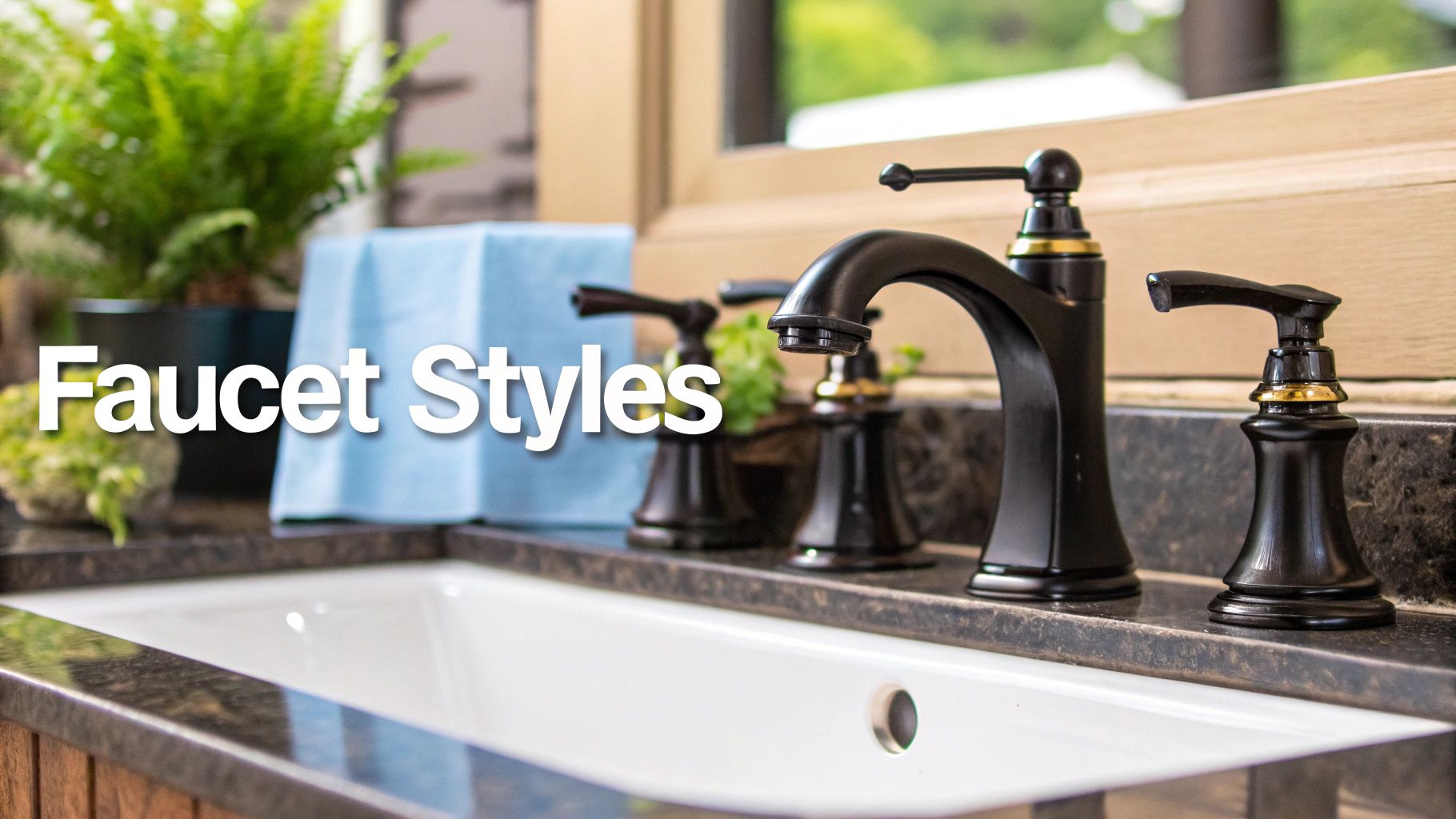
Your Guide to Types of Faucets Bathroom Styles
Welcome to the definitive guide on bathroom faucet designs. Picking a faucet is about so much more than just turning on the water; it's a critical design choice that sets the tone for your entire bathroom's look and feel. This guide will walk you through everything, from classic deck-mounted options to sleek, modern wall faucet styles.
Choosing Your Perfect Bathroom Faucet
Selecting the right faucet is one of the most impactful decisions you'll make in a bathroom update or a full-on renovation. It's not just a piece of hardware—it's the centerpiece. A great faucet can tie the whole room together, acting as a focal point that truly shows off your personal style. It's where form and function shake hands every single day.
But let's be honest, the world of bathroom faucets can feel a bit overwhelming. With endless styles, finishes, and installation types, it's easy to get lost. The secret is understanding how a faucet and sink work together. According to home improvement experts at The Spruce, compatibility is key to creating a look that's both stunning and practical.
Key Factors to Consider
Before you start falling in love with specific models, let’s ground ourselves with a few core factors. Nailing these down first ensures the faucet you choose not only looks fantastic but also works perfectly in your space.
- Sink Compatibility: Take a look at your sink. The number of pre-drilled holes it has will be your biggest guide. A single hole is meant for a specific type of faucet, while three holes open the door to centerset or widespread designs.
- Installation Type: Where will the faucet live? Will it be mounted on the sink's deck or directly on the wall behind it? Each option comes with its own plumbing and space requirements, so this is something you'll want to plan for ahead of time.
- Aesthetic and Style: This is the fun part. From the clean, minimalist vibe of a sharp wall faucet to the timeless elegance of a widespread fixture, your faucet should feel right at home with your bathroom’s overall theme.
Choosing a faucet is a balance between technical requirements and personal expression. The goal is to find a fixture that meets the practical needs of your household while enhancing the beauty and atmosphere of your private sanctuary.
If you're planning a more significant project, professional bathroom remodeling services can be a huge help in weaving your new faucet into a larger, cohesive design. They'll make sure all the plumbing and installation details are handled correctly, giving you peace of mind.
Think of this guide as your roadmap. We’ll break down all the different types of faucets bathroom styles have to offer, from the ever-popular deck-mounted fixtures to the sophisticated wall faucet options from premium brands like CRANACH. For an even deeper look at narrowing down your choice, check out our complete guide on how to choose a bathroom faucet.
By the time we're done, you'll have the confidence and knowledge to pick a faucet that takes your space from just okay to absolutely exceptional.
Understanding Faucet Mounting Options
Before we jump into the fun stuff—all the different styles and finishes—we need to talk about the foundation of any faucet installation: the mounting type. This is your starting point, and it’s usually decided for you by your existing sink or vanity. Think of it like choosing the right tires for your car; you have to get the ones that fit the wheels you already have.
When it comes to the types of faucets bathroom setups use, there are two main categories: deck-mounted and wall-mounted. Each has a completely different look, installation process, and plumbing needs. Figuring out which one is right for you is the first real step in picking out that perfect fixture.
Deck-Mounted Faucets: The Classic Choice
Deck-mounted faucets are what most of us picture when we think of a bathroom sink. They're the most common type out there for a reason. Just like the name says, they are installed directly onto the "deck" of the sink or the countertop right behind it. It's a simple, familiar design that works in almost any bathroom.
These faucets are made to fit into the pre-drilled holes in your sink or vanity. The number and spacing of these holes will determine which style you can install.
- Single-Hole: A clean, minimalist look where a single handle and the spout are all one unit.
- Centerset: A compact design where the handles and spout are all on one baseplate, made to fit a standard 4-inch hole spread.
- Widespread: A three-piece setup with separate hot and cold handles and a spout, giving you a more high-end, customizable look for bigger countertops.
Knowing your sink's hole configuration is absolutely crucial before you start shopping. It'll save you the headache of falling in love with a faucet that just won't fit. If you want to get into the nitty-gritty of installation, our guide on how to install a bathroom faucet breaks it all down.
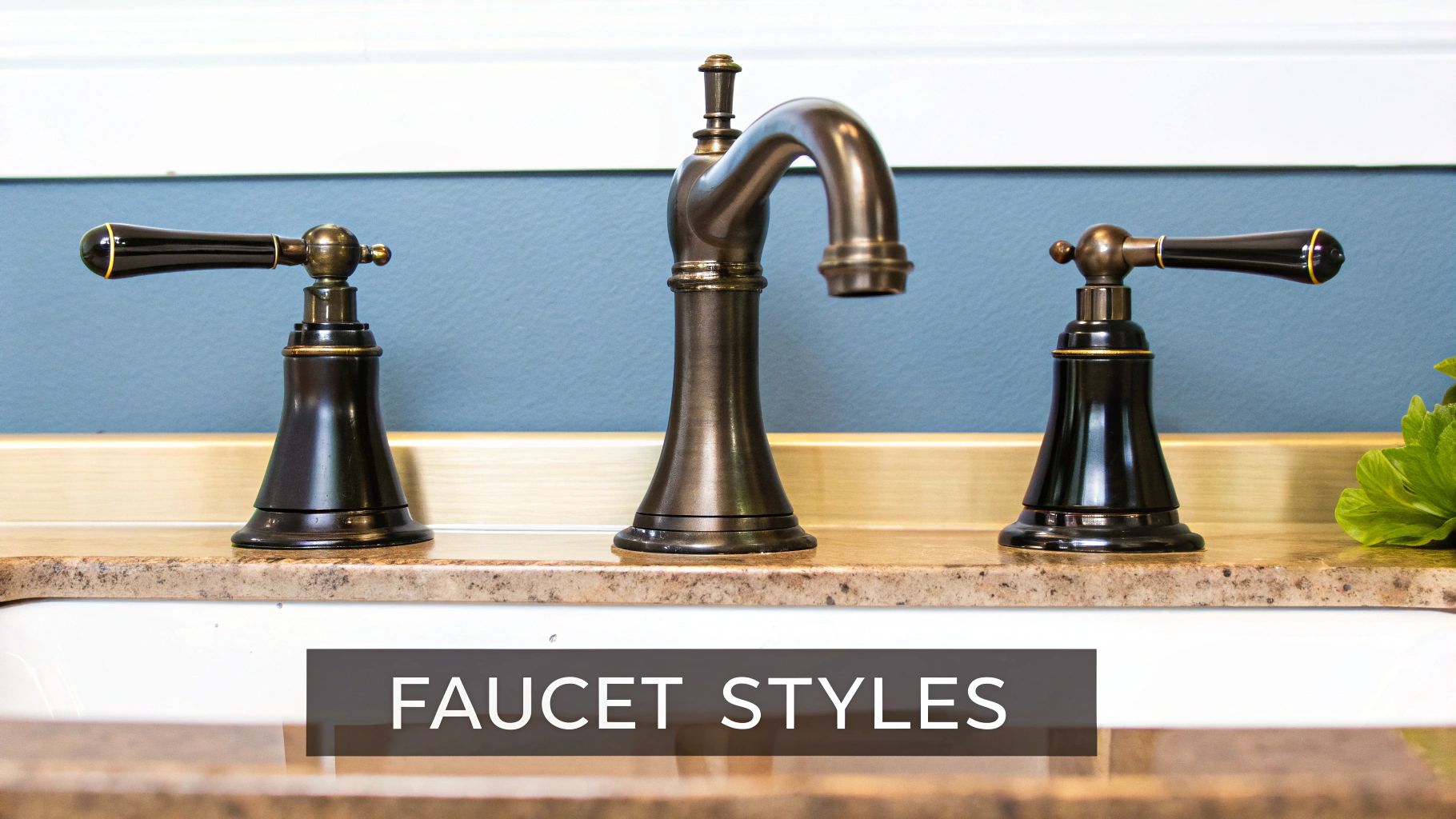
As you can see, the hole spacing is what really matters. It's the key piece of information that points you to the right type of faucet for a perfect fit.
Wall-Mounted Faucets: The Modern Alternative
If you're after a more dramatic, contemporary look, the wall faucet has become a go-to choice. Unlike its deck-mounted cousins, this style is installed right into the wall above the sink. The result? A clean, uncluttered countertop that feels intentional and sophisticated. It’s a design element that elevates the whole space.
This setup instantly frees up valuable counter space, which not only looks great but also makes cleaning a whole lot easier. It contributes to a more open, airy feeling in the bathroom.
A wall-mounted faucet doesn't just save space—it turns the whole sink area into a design feature. It shifts the room's vibe from purely functional to something more architectural and deliberate.
There's a catch, though: choosing a wall faucet requires a bit more planning. The plumbing, including the valve, has to be installed inside the wall, which means it’s a job best tackled during a bigger remodel or new construction. You also have to get the spout length and placement just right to make sure the water flows neatly into the basin without splashing everywhere.
When it’s done right, the payoff is huge. You get a stunning focal point that combines high style with some very real, practical benefits.
A Deep Dive Into Deck-Mounted Faucets
When you start exploring the different types of faucets bathroom vanities can support, you’ll notice one style dominates the scene: deck-mounted. These are the familiar fixtures you see installed directly onto the sink or countertop—the "deck." It’s no surprise they’re so common; their installation is generally straightforward, and they come in a dizzying array of styles to match any vision.
The key to getting it right is understanding the three main players in the deck-mounted world: single-hole, centerset, and widespread. Each is designed for a specific sink setup, so choosing the right one means knowing your sink's "faucet centers"—the distance between the pre-drilled holes.
Single-Hole Faucets: Simplicity And Style
Think clean, modern, and uncluttered. That’s the single-hole faucet. As the name implies, it needs just one hole in your sink or countertop, neatly combining the spout and handle controls into a single, compact unit. It’s a perfect match for smaller vanities or any contemporary bathroom where you want those crisp, clean lines to shine.
Installation is usually a breeze compared to its multi-hole cousins, which makes it a go-to for quick bathroom updates and DIY projects. Plus, many single-hole models come with an optional baseplate (also called an escutcheon). This clever addition lets you cover up old three-hole configurations, giving you even more flexibility.
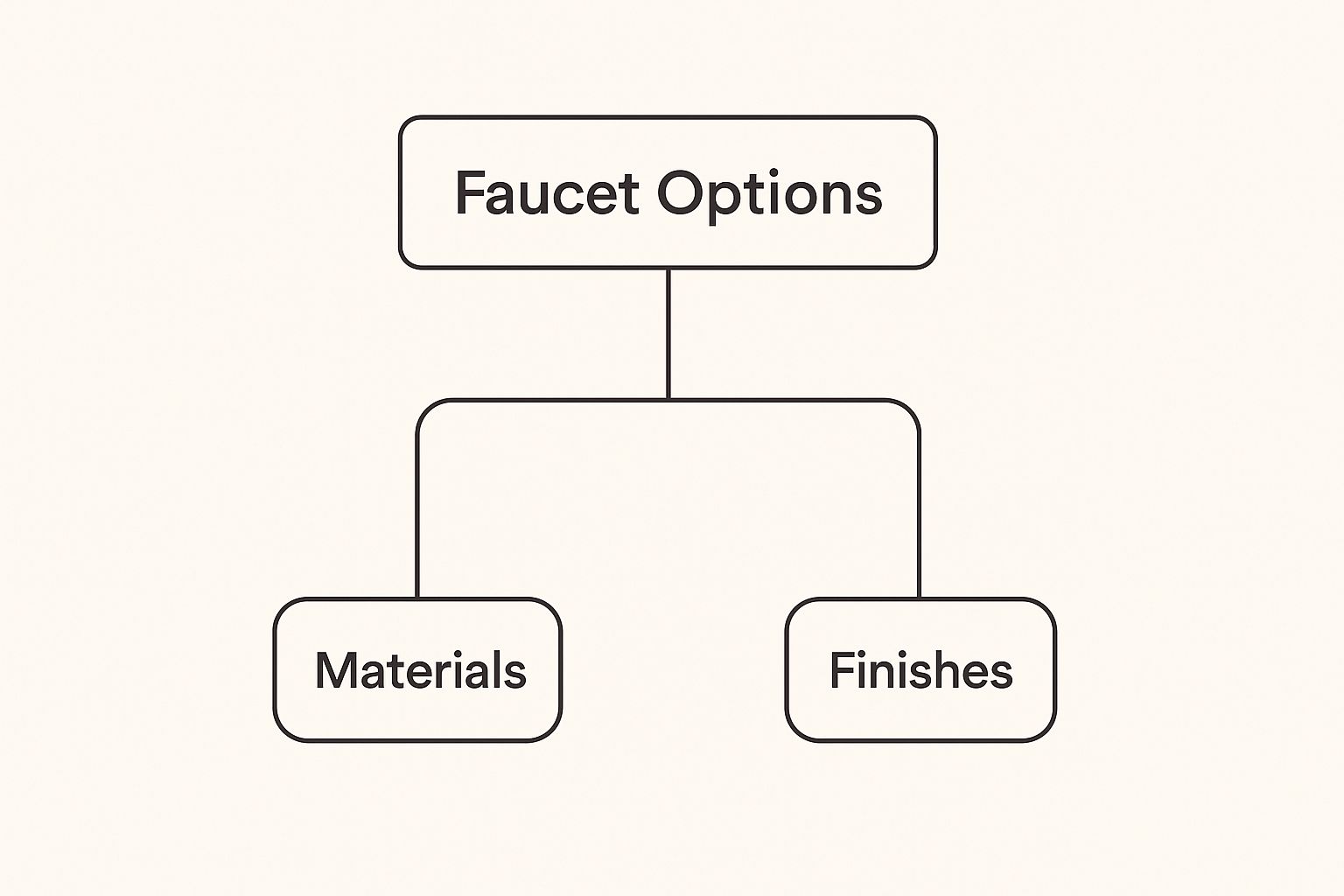
This graphic really shows how, once you land on a faucet style, the material and finish become the next big decisions that define its final look and how well it holds up over time.
Centerset Faucets: The Classic All-In-One
Centerset faucets are another staple you’ll find everywhere, especially in traditional and transitional bathrooms. They are built for sinks with three holes and have a standard 4-inch spread from the center of one outer hole to the center of the other. The spout and both handles are all connected on a single baseplate, creating a tidy, self-contained look.
Because all the components are fixed together, installation is pretty simple. They offer a classic, balanced feel that just works in almost any setting. If you measure your sink and find that 4-inch spread, a centerset faucet is exactly what you’ve been looking for.
A centerset faucet is like a well-tailored suit—it’s a classic, reliable choice that brings a sense of order and cohesion to the space. Its unified baseplate provides a clean, self-contained look that never goes out of style.
Choosing a centerset faucet is often a practical move based on your sink, but its timeless appeal means it never feels like a compromise. You can dive deeper into all the options by exploring the different types of bathroom faucets in our guide.
Widespread Faucets: Customizable Elegance
If you’re aiming for a more luxurious, high-end feel, a widespread faucet is the way to go. This style comes in three separate pieces: a spout and two individual handles for hot and cold water. Like centersets, they’re designed for three-hole sinks, but the big difference is that the spacing isn't fixed.
The distance between the handles can be adjusted, typically anywhere from 8 to 16 inches. This flexibility allows for a grander, more spacious appearance on the countertop. It’s an ideal choice for larger vanities and master bathrooms where you want the faucet to be a real design statement. There's no denying that widespread faucets lend an air of sophistication to a space.
No matter which deck-mounted faucet you're eyeing, accurate measurements are absolutely essential. Just follow these steps:
- Count the Holes: First, see how many pre-drilled holes you have in your sink or countertop.
- Measure the Spread: For three-hole setups, grab a tape measure and find the distance from the center of the far-left hole to the center of the far-right hole.
- Match the Faucet: A single hole means you need a single-hole faucet. A 4-inch spread calls for a centerset. An 8-inch or wider spread needs a widespread faucet.
Taking a minute to measure will save you the headache of buying a beautiful faucet that just won’t fit. It's the small step that ensures your bathroom upgrade goes off without a hitch.
Deck-Mounted Faucet Comparison
To make things even clearer, here’s a quick-glance table comparing the three main deck-mounted styles.
| Faucet Type | Installation Complexity | Typical Sink Holes | Best For |
|---|---|---|---|
| Single-Hole | Low | 1 | Modern, minimalist bathrooms; smaller vanities |
| Centerset | Low to Medium | 3 (4-inch spread) | Traditional or transitional styles; standard sinks |
| Widespread | Medium | 3 (8-16 inch spread) | Large vanities; master bathrooms; custom looks |
This table should help you quickly identify which faucet type not only fits your sink but also aligns with the style and complexity of your project.
The Modern Appeal Of The Wall Faucet
Emerging right from the wall like a piece of modern art, the wall faucet is a stunning break from the usual deck-mounted designs. This style is quickly becoming a go-to for designers and homeowners who are after a clean, minimalist vibe. By lifting all the hardware off the countertop, you get this beautiful, uncluttered surface that’s not just calming to look at but also a breeze to wipe down.
This one choice can completely transform your sink area from just a functional spot into a real focal point. The sleek lines and floating look of a wall faucet can make a small powder room feel bigger or give a master suite that high-end, hotel-inspired luxury. It's a statement piece, and it says you care about the details.
Installation And Planning Considerations
Here's the thing about wall faucets: unlike their deck-mounted cousins, you can't just swap one in over the weekend. The installation is a bit more involved and definitely requires some planning. All the important stuff—the plumbing and the critical in-wall valve—is hidden behind the drywall. This makes them a perfect fit for new construction or a major remodel where the walls are already opened up. As noted by plumbing experts, this "rough-in" valve is the heart of the whole system, so its placement has to be spot-on.
Another detail you can't overlook is making sure the spout has the perfect reach and angle for your sink. The whole point is to get the water flowing right into the center of the basin, not hitting the back edge or splashing over the front.
"When you're planning for a wall-mounted faucet, the relationship between the spout's length and the sink's shape is everything. If you miscalculate by just an inch or two, you’ll be dealing with the daily headache of water splashing all over your counter or floor."
To get it just right, you'll want to lock down these key measurements:
- Spout Length: Measure from the wall to the tip of the spout. You need to be sure it extends far enough over the basin to be comfortable and functional.
- Mounting Height: How high you place the faucet above the sink rim changes the water's trajectory. A few inches is pretty standard, but this really depends on how deep your sink is.
- Handle Placement: Think about where the handles will go. They need to be easy to reach without bumping into your mirror, shelves, or anything else.
Investing In Quality With CRANACH
Because so much of the plumbing is inside the wall, choosing a high-quality wall faucet isn't just a good idea—it's essential. The CRANACH Farne Wall-Mounted Bathroom Sink Faucet is a perfect example of what happens when you combine top-tier engineering with sophisticated design.

This shot really captures the faucet's elegant profile and premium finish, showing how its minimalist form fits perfectly in a modern bathroom. With models like this from CRANACH, you get solid brass construction, which means the parts you can't see are just as durable as the beautiful fixture you see every day.
Opting for a premium wall faucet from CRANACH means you're not just buying a piece of hardware; you're investing in performance that will last and a style that won't fade. The durable finishes are made to resist tarnishing and scratches, keeping your bathroom looking sharp for years. It's a smart move for anyone looking to add lasting value and a touch of real elegance to their home. This kind of fixture is incredibly versatile, fitting into all sorts of aesthetics from ultra-modern to industrial chic, making it one of the most flexible types of faucets bathroom designers love to work with.
Exploring Specialty and Smart Faucets
Once you move past the standard mounts and classic designs, the world of bathroom faucets really opens up. This is where you find specialty styles and smart technology that can completely transform your daily routine. These aren't just about function anymore; they’re about creating a more luxurious, convenient, and even healthier space. From the peaceful flow of a waterfall spout to the effortless control of a smart faucet, these options give us a peek into the future of bathroom design.
Unique Designs for Modern Sinks
Two specialty styles have really caught on lately: the waterfall faucet and the vessel faucet. Each one is designed to make a big visual statement.
A waterfall faucet is all about creating a spa-like experience. Instead of a typical narrow stream, it delivers a wide, gentle sheet of water that looks and feels like a natural cascade. It’s a small change that makes the simple act of washing your hands feel calming and a little more special.
A vessel faucet, on the other hand, is a stylish solution for a specific problem: the vessel sink. Since these sinks sit right on top of the counter, they need a much taller faucet to reach up and over the rim. These fixtures are designed with that extra height and an elegant arc, making them the perfect companion for the bold, sculptural look of an above-counter basin.
The Rise of Smart Faucet Technology
The biggest leap forward in bathroom fixtures has been the arrival of smart technology. Touchless and voice-activated faucets are no longer just for public restrooms; they're becoming a go-to upgrade for modern, eco-conscious homes. Brands like CRANACH are leading the way, engineering smart faucets that blend convenience and efficiency with beautiful design.
These smart faucets offer real, tangible benefits that homeowners today are looking for:
- Better Hygiene: Touchless operation is a game-changer. You never have to touch the handle with dirty hands, which cuts down on the spread of germs and keeps your bathroom cleaner.
- Water Savings: We've all accidentally left a tap running. Many smart faucets have sensors that automatically shut off the water, preventing waste. Over time, that can add up to significant savings on your water bill.
- Serious Convenience: Voice commands and simple tap controls make multitasking so much easier. It feels futuristic, but it's also incredibly practical when your hands are full or messy.
Smart faucets represent a shift from fixtures that just react to ones that anticipate your needs. They help conserve resources and add a layer of hygiene and convenience that traditional faucets simply can't match.
There's a reason you're seeing more of them. The smart bathroom faucet market is booming, driven by our growing love for smart home tech and a collective focus on sustainability. According to a report from Fortune Business Insights, the global smart bathroom market is projected to grow significantly, reflecting a strong consumer demand for these innovations.
If you're thinking about upgrading, it's worth checking out the latest home design trends, which are leaning heavily into smart technology. A smart faucet isn't just a gadget; it's a forward-thinking upgrade that makes modern life a little bit easier. And while the tech is advanced, the installation isn't always as intimidating as it sounds. If you're comfortable with basic plumbing, our guide on how to replace a bathroom faucet can walk you through the general process.
How to Choose the Right Faucet Finish
Think of your faucet's finish as its first impression. It's the color and texture that catches your eye and pulls the whole bathroom design together. But a great finish does more than just look good; it acts as a protective shield, defending the faucet from the daily grind of moisture, fingerprints, and cleaning products. The right choice here boosts both the look and the lifespan of your fixture.
Choosing a finish is a lot like picking the right piece of jewelry for an outfit. It has to complement the overall vibe, whether you're going for timeless elegance or a bold, modern statement. Getting this detail right makes your new faucet feel like it was always meant to be there.
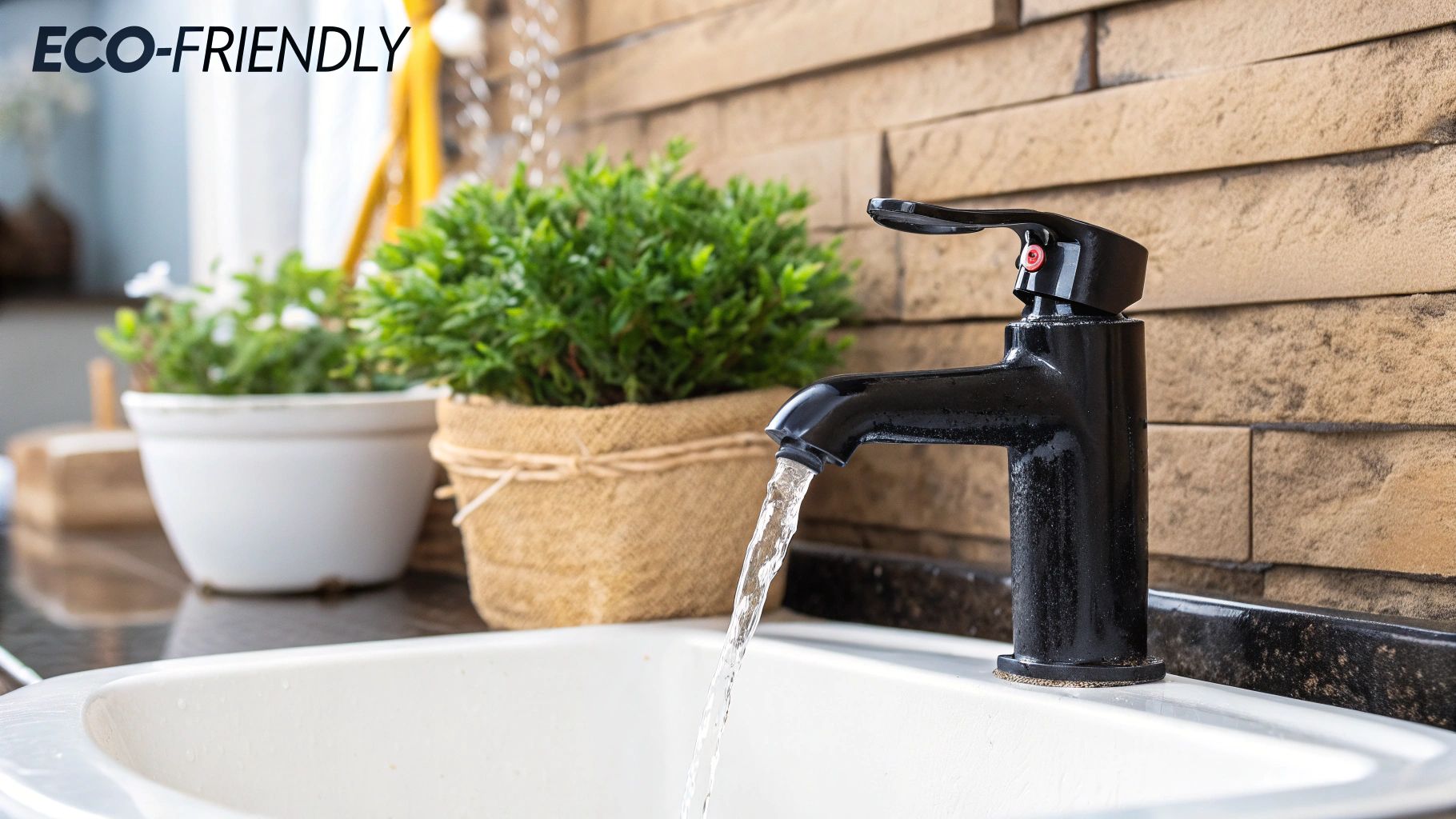
Timeless and Trending Finishes
Some finishes have been bathroom mainstays for decades thanks to their classic appeal and durability. Others are newer on the scene but have quickly become design powerhouses. Knowing a bit about each will help you pick a winner.
- Polished Chrome: Bright, reflective, and tough as nails. Chrome is a true classic that works in almost any bathroom, from traditional to ultra-contemporary.
- Brushed Nickel: With its soft, satin-like look, brushed nickel is a champion at hiding water spots and fingerprints. This makes it a go-to for busy family bathrooms where low maintenance is key.
- Oil-Rubbed Bronze: This dark, rich finish brings a touch of old-world charm, often with subtle coppery highlights peeking through. It's the perfect match for rustic, Tuscan, or traditional designs.
- Matte Black: A modern favorite, matte black creates a dramatic focal point. Its non-reflective surface has a sophisticated, high-contrast look that pairs beautifully with a sleek wall faucet.
- Champagne Bronze: A warmer, more muted gold, this finish offers a touch of luxury without being too flashy. It's an elegant choice that feels both soft and sophisticated.
The Foundation of a Great Finish
A beautiful finish is only as good as the material it's bonded to. That's why solid brass has long been the gold standard for high-quality faucet construction. It's incredibly durable and naturally resists corrosion, creating a stable base that ensures the finish sticks around for the long haul.
Investing in a faucet with a superior finish from a trusted brand like CRANACH is crucial. Their multi-layered finishes are engineered to resist tarnishing, scratches, and corrosion, ensuring your faucet looks beautiful and performs flawlessly for years to come.
While looks are important, homeowners are increasingly prioritizing safety and efficiency. This is where features like thermostatic valves come in, which prevent scalding by precisely regulating water temperature. The global market for these safety-focused faucets was valued at $11.08 billion in 2024 and is expected to climb to $18.04 billion by 2029. This boom shows a clear shift toward smarter, safer fixtures. You can discover more insights on the thermostatic faucet market and its projected growth.
Ultimately, sifting through the various types of faucets bathroom designs offer is all about balancing style, material quality, and those forward-thinking features.
Common Questions About Bathroom Faucets
Picking out a new faucet can feel surprisingly complicated. With all the different styles and terms floating around, it’s easy to get lost. Let's clear up some of the most common questions to help you find the perfect fit for your bathroom.
How Do I Know Which Faucet Will Fit My Sink?
This is the first and most important question to ask. The answer is right there in your sink or countertop—just look at the pre-drilled holes.
- For faucets that mount directly onto the sink deck, grab a tape measure. You'll want to measure the distance between the centers of the two outermost holes.
- If that distance is 4 inches, you’re looking for a centerset faucet.
- If it's 8 inches or wider, you need a widespread faucet.
- Just one hole? That makes it easy—you need a single-hole faucet.
A wall faucet is a different beast altogether. Since it doesn't use the holes in your sink, you need to be extra careful about matching the spout's reach to your basin to avoid splashing.
What Is The Best Material For A Bathroom Faucet?
When you’re investing in a new fixture, you want it to last. That's why solid brass is the gold standard for faucet bodies. It's incredibly durable and stands up to rust and corrosion like a champ. Think of it as the strong, reliable foundation that allows those beautiful finishes to shine for years.
A quality brand like CRANACH builds its faucets on this principle, ensuring they don't just look good on day one, but for many years to come.
A faucet made from solid brass is an investment in longevity. It's the unseen hero that ensures the beautiful fixture you see every day stands up to wear and tear.
Of course, keeping your faucet in top shape is also key, especially if you have hard water. Understanding how to deal with mineral buildup will keep it running smoothly. We've put together a guide specifically on removing calcium deposits from faucets that you might find helpful.
For a durable and stylish addition to your bathroom, explore the premium faucet collections from CRANACH at https://cranachhome.com.

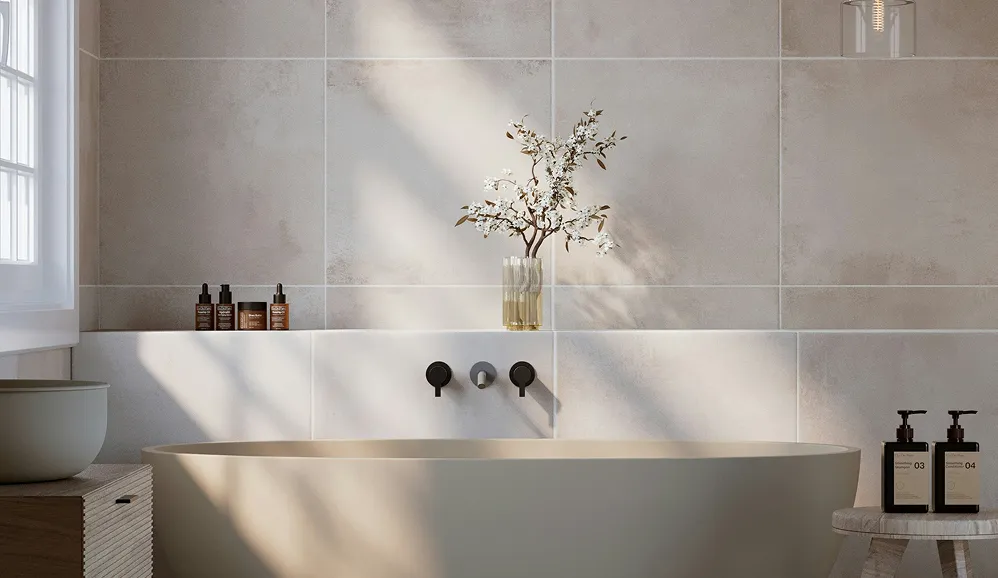
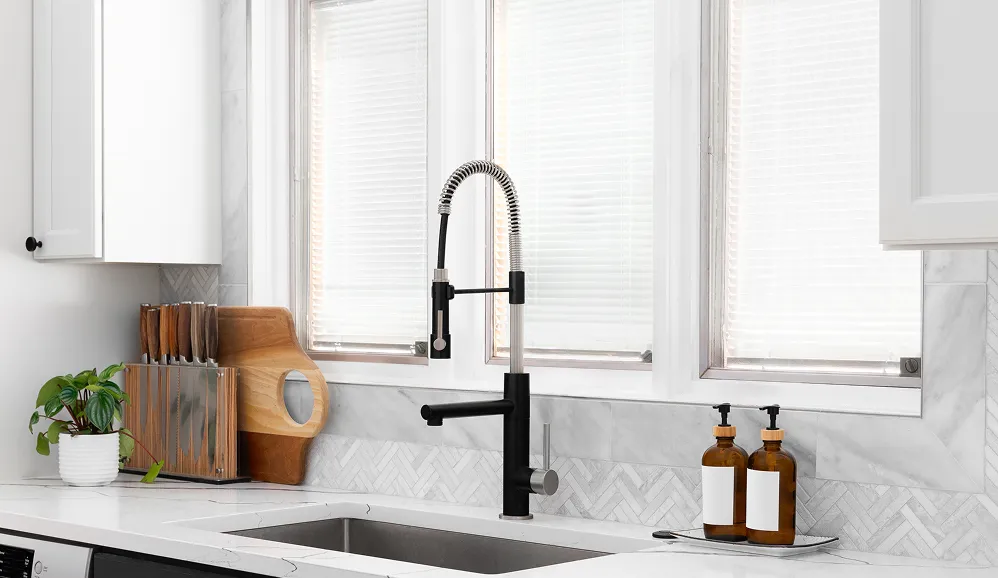
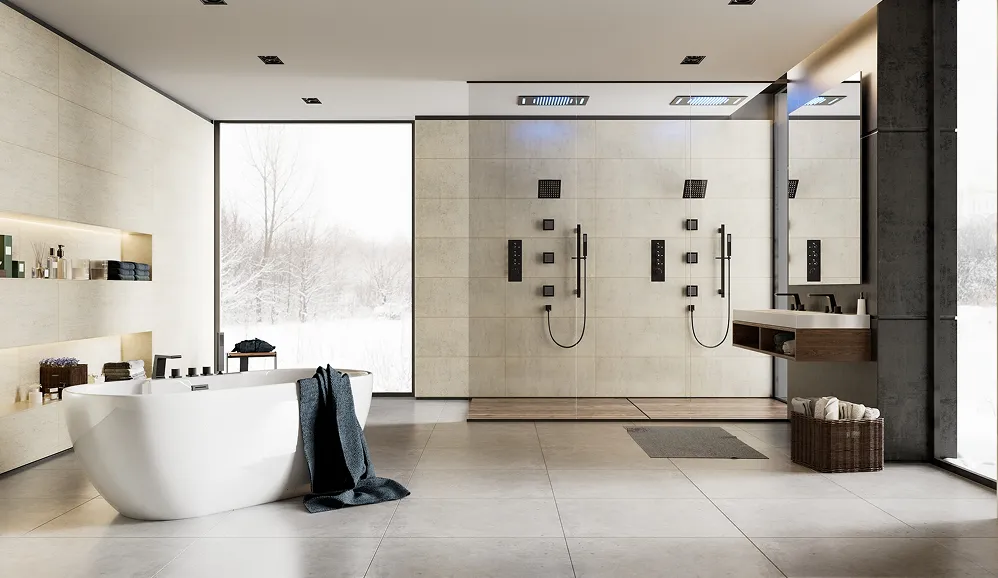
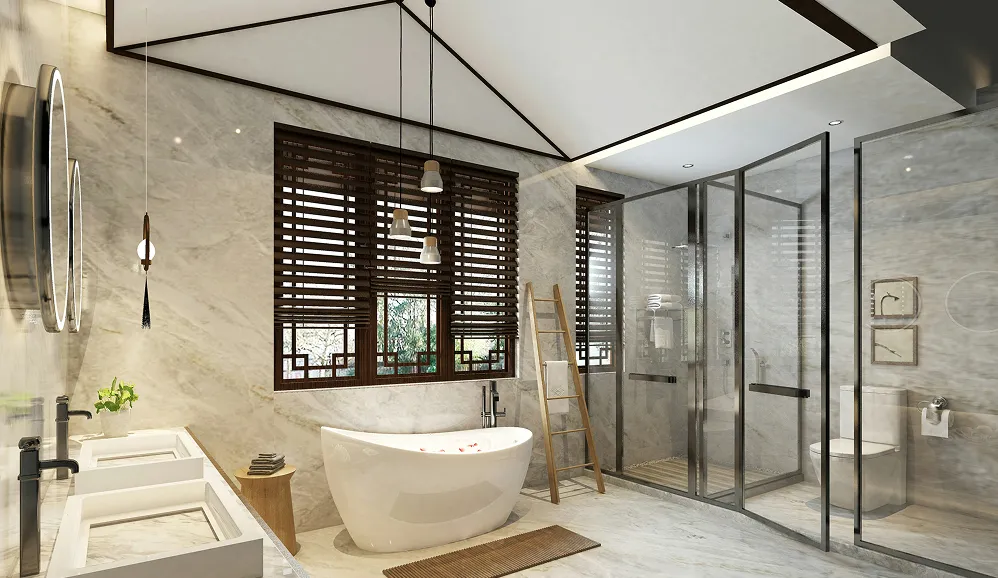
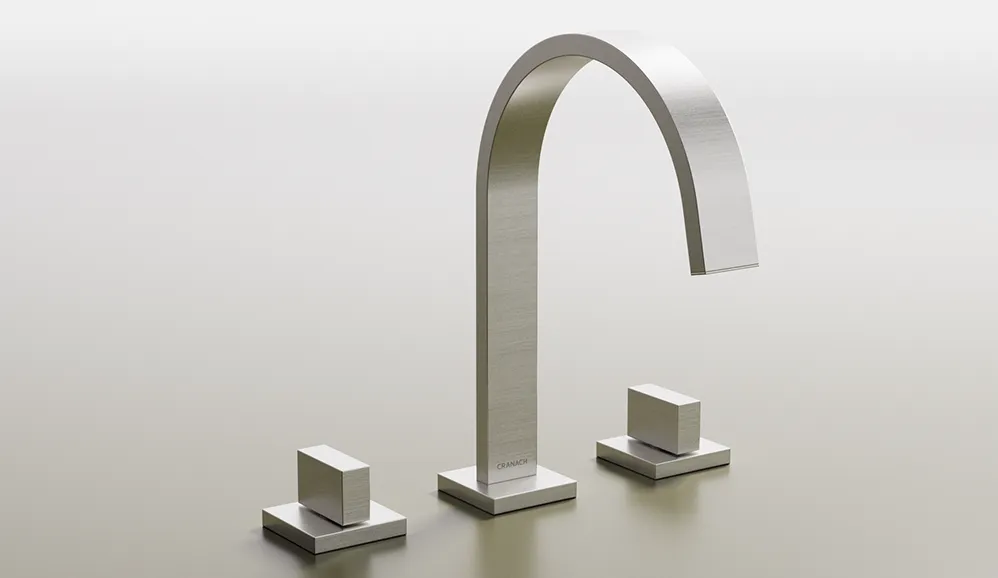
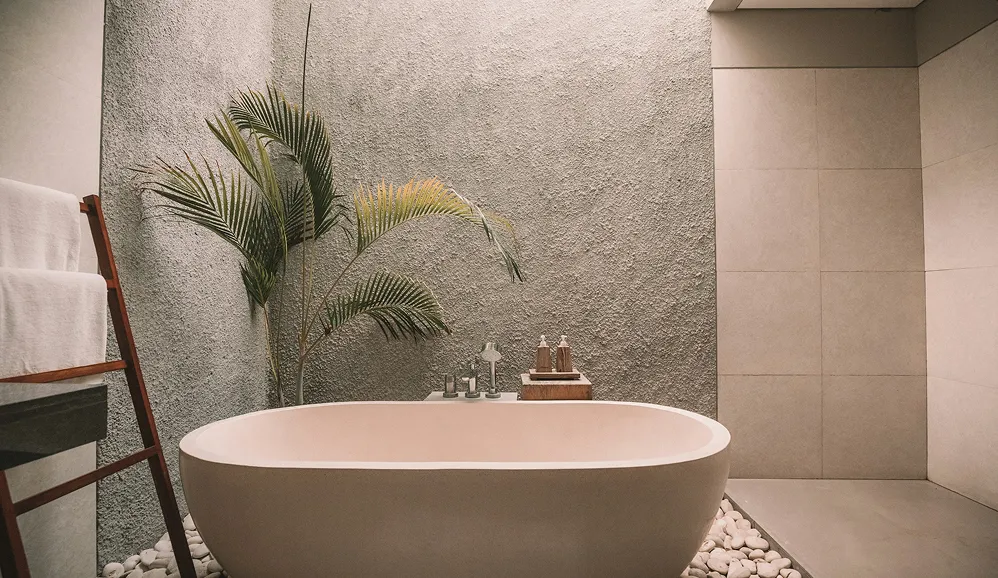
Leave a Reply